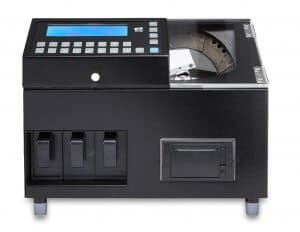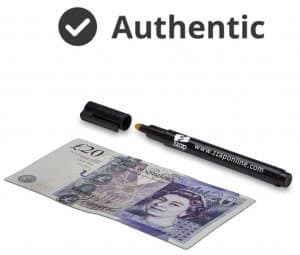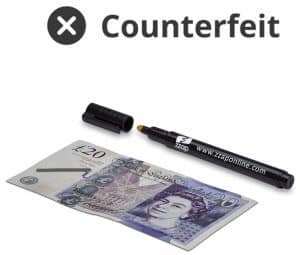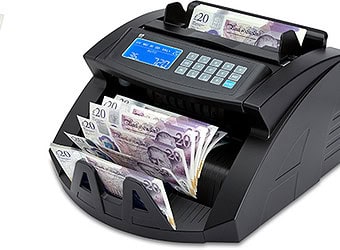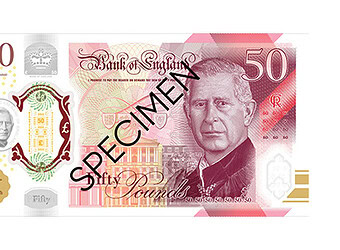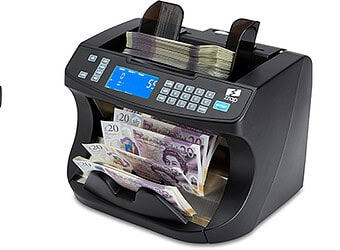It is common knowledge that in recent years card and electronic payments have become more prevalent. The question is, what are the benefits and pitfalls of cash and card. Knowledge is power. To make informed decisions about your payment processes is a key step in streamlining your business and finding the most cost effective solution for your business.
Cash
Payments reached a historic milestone in 2004 where debit card spending (£272 billion) overtook cash spending (£269 billion)(Source The UK Card Association). However this takes into account business and financial organisations. Among private consumers, cash is the most popular payment method. In fact private consumers account for 99% of cash payments and used cash for 52% of their transactions. 56% of all cash payments were for £5 or less (Source: Payment council).
The organisation which represents the payment industry, states that by 2024 cash will be used for 30% of payments. Despite this ATMs increased to a new peak in 2014 at 69,382 with consumers withdrawing a total of £189 billion. Moreover only 4.4% of adults rarely use cash at all. David Hensley, the director of the payments industry body said “Cash remains a vital part of our day-to-day lives and is still the most attractive or only option in lots of situations. We continue to value notes and coins so highly for their familiarity and widespread acceptance.”
The type of business also has an impact on cash usage. 8 out of 10 purchases in pubs, clubs and newsagents were paid in cash, however 3 out of 10 purchases were made in cash at petrol stations. Payments under £1 for telephone boxes and car parks have dropped sharply. It is worth noting cash in the UK will see a large revamp with the introduction of new polymer banknotes and the new £1 coin which is suspected to make a dent in the cash usage decline.
Cash has been around since the 15th century, everybody knows what it is and how to use it. Consumers will choose cash because it is convenient, it has less security risks i.e. you never lose more than what you have in your wallet, it allows consumers to be more attuned with their spending, there is no need to reconcile receipts to your credit card statement and the list goes on. For this reason it is an attractive option to pay in cash. It also costs very little for a business to accept cash if the business has effective cash handling processes in place. The result is cash is a widely accepted, popular and cost effective way to accept payment.
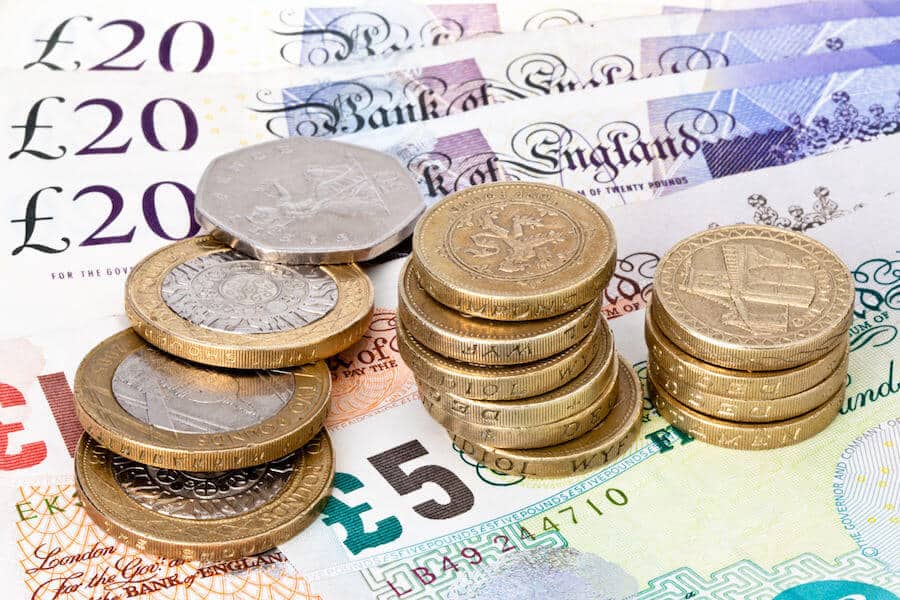
As I mentioned, accepting cash payments costs very little when effective cash handling processes are in place. With the help of POS systems and cash handling equipment, handling cash payments has become easier, more efficient and reduces the risks associated with cash handling. For example counting and checking money can be time consuming however a banknote counter or a coin counter & sorter can do the same task more than twenty times quicker. From small to large volumes of cash it’s always worth investing in effective cash equipment and establishing clearly defined cash handling processes for staff to follow.
One of the disadvantages of accepting cash which causes problems for businesses around the globe is counterfeit money. Nearly £5 million worth of counterfeit banknotes in the UK were removed from circulation in 2015. In fact, percentage-wise British pound sterling is one of the most counterfeited currencies in the world. The most counterfeited UK banknote was the £20 banknote. Ever since banknotes were invented they have been forged. Consequently it is always a good idea to check your banknotes when you are accepting them to make sure they are genuine especially in situations where you cannot see the banknotes clearly.
Counterfeit banknotes are worthless and if accepted there is no compensation which ultimately is deducted from your net profit. It is a criminal offence to hold onto or trade counterfeit notes. If you think a banknote is counterfeit you must hand in the banknote to the police where they will give you a receipt and send it to the Bank of England for analysis. If the banknote is genuine they will reimburse you.
In order to detect a counterfeit banknote, The Bank of England designs security features on all banknotes that can be checked to see if a banknote is genuine. Below is an example of the security features for a £20 banknote.
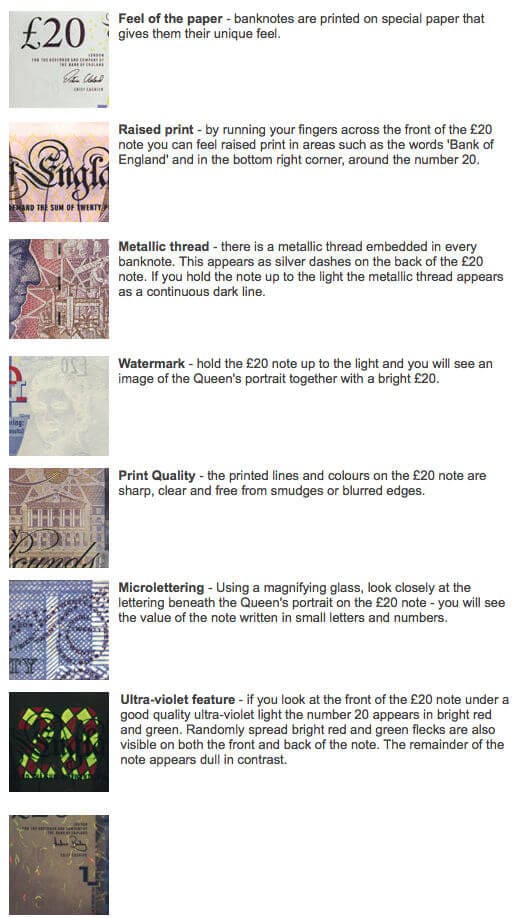
The majority of the time checking security features is too time consuming especially if you have a long queue of people wanting to be served or there is a high volume of cash to be checked. As a result many retailers use counterfeit detectors which can detect counterfeits in less than a second with up to 100% accuracy. Below I have explained the advantages of each type of counterfeit detector in order for you to make a more informed decision.
Banknote checker pens are the cheapest form of counterfeit detection. They detect if a banknote is made from paper (used in some counterfeit banknotes) or fibre based paper (used in genuine banknotes). A dark stain appears on the banknote if the banknote is made of paper. If the banknote is genuine it cause little or no discolouration. Although cost effective, pens can be unreliable. A seasoned counterfeiter will almost certainly use fibre based counterfeits to avoid detection by counterfeit detector pens.
UV (ultraviolet) banknote detectors illuminate invisible UV marks printed on banknotes. If the UV marks do not illuminate, the banknote is very likely to be counterfeit (unless it has been through the wash or similar). Also used to detect non-currency such as driving licences and bank cards, UV detectors are a cheap and effective way to verify items. It is worth noting the Bank of England advises that UV detectors should be 365nm (the correct UV frequency) and LEDs should not be used to effectively detect counterfeits.

Automatic banknote detectors are more expensive than pen and UV detectors, generally costing from £80 to £100 however they are the most accurate and fastest way to detect a counterfeit banknote. They take less than half a second to verify a banknote. If the banknote is counterfeit it will alert you with a visual and audio warning. You can expect to detect a number of counterfeits, so they more often than not offer a healthy return on investment. They also take away the hassle and time consuming task of checking banknotes manually.

As well as counterfeiting, cash needs security to reduce the risk of robbery or even internal theft. Again, cash handling firms have the answer. POS safes are specially designed to be mounted to your countertop so any excess cash from your cash drawer can be conveniently put into the safe below.

Overall it is essential to accept cash payments in most brick-and-mortar establishments. It is the most cost effective method for small businesses and it is widely accepted. However many retailers forget that cash handling can be streamlined to save a lot of time and money. To accept cash and not streamline your cash handling process is a costly mistake for any business.
Card
Card payments started in the 1950s aimed at diners that operated as charge cards (Source: The UK Card Association). Since then card payment technology has advanced rapidly so much so that at the end of 2011 there were 165.1 million cards in issue (Source The UK Card Association).
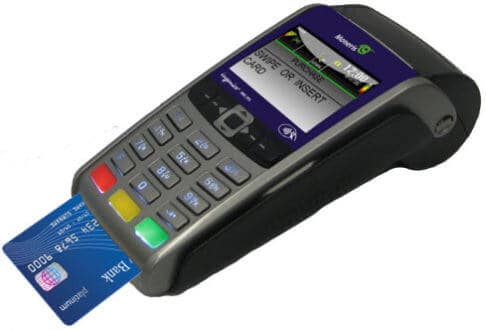
Research by EE in 2015 found that 25% of shoppers have completely abandoned a purchase because they did not have cash and the shop didn’t accept cards. The same research found 4 out of 5 consumers expect to have the option to pay by card with nearly a third of consumers preferring to pay with contactless because of its speed.
Its easy to see why card payments have become increasingly popular over the years. Consumers can access their bank accounts 24/7 and cards are accepted just about anywhere in the world. They are a fast, simple and safe way to make a purchase. Card issuers also offer different types of cards to suit different needs; Credit cards replace cheques, debit cards replace cash and prepaid cards are used by stores as gift cards. Another clear advantage of card payments is that it enables consumers to clearly track expenses. Card companies will also argue that cards are safer than carrying cash or using cheques since they can be replaced and consumers have limited liability if a card is stolen.
The statistics and market research heavily support the argument to accept card payments however it is all too easy for a business (especially a SME) to overlook the disadvantages and not prepare accordingly. Firstly, it is not as easy as simply opening an account and voilà you can accept card payments. It can be a frustrating and lengthy process. It was found that the 83% of businesses that do not currently accept card payments said they considered using them but 77% said they had little or no understanding of how card payments work (Source: British SME).
If you are in the vast majority of SMEs who have little understanding of card payments it is worth knowing that UK card payment providers can pull the wool over your eyes all too easily. For example they may hide fees in your merchant statements which add up in the long run. PCI fees can be unnecessarily high and minimum monthly service charges can also add to your costs. Miscellaneous fees can also be charged and it can be difficult to find out what they actually refer to. Furthermore long contract periods make it hard for you to leave. Setting up card payments is a topic in itself. For now I intend just to point out that accepting card payments is not all plain sailing.
In addition to setting up an account, there is the risk of card fraud. Fraud is a significant problem in the UK which costs millions of pounds. Cards are stolen at various places, the most popular places being restaurants, retails stores and at ATMs. Although UK card holders are not financially liable for fraud, small business owners and the banks get the tab. Firstly if the business delivers the product, the business already loses the product unless the police are able to recover it, which is unlikely. Secondly the bank may look to the business for reimbursement for permitting the fraudulent transaction.
There are however preventative measures you can take. An effective technique to spot a counterfeit card is to check the UV mark under a ultraviolet light detector. Most cards have a UV marking which illuminates under ultraviolet light. If there is no UV mark, be very cautious. It is worth noting most cards are chip and PIN which is a new security measure to reduce fraud. Be cautious if the customer is using a non-chip and PIN card and be sure to implement extra checks.

If you are unsure about the authenticity of the card you can also ask the customer to write their signature without looking at the card and then check this alongside the signature on the card. Often you can tell straight away if they can’t reproduce the signature. Another underrated method of detecting card fraud is simply using a gut feeling. If theres a new customer making a large order and they look uneasy or nervous, consider calling their cards provider to verify their identity or even get the bank to call the card owner for verification.
It is worth noting some legitimate cardholders will purchase goods then claim they didn’t receive the items so they get them for free. This is especially prevalent on online purchases. You can prevent this type of fraud by choosing delivery methods that are “signed for” and tracked so that it proves they received the item. Alternatively, if the product is purchased in-store, be sure to keep internal records that can prove the item was purchased e.g. receipts or CCTV footage.
Overall due to the increasing popularity of card payments every business should now accept this method of payment in order to future proof their business. However it is key to read your contract in depth and highlight any areas of concern with your point of contact. If you don’t, you risk entering into a long contract with high fees which is hard to leave. It is also always worth enforcing fraud preventative processes in your business so that you have a consistent level of protection against fraudsters.
Last word
It is clear that cash and card should be accepted due to their widespread popularity. Both can be a safe and efficient means of payment however both have their clear disadvantages that need to be tackled head on. A misinformed business owner could easily lose money through inefficient cash handling, accepting counterfeits, high card payment fees, card fraud and so on. This article has highlighted the key pitfalls however I encourage you to research the specific areas that are most applicable to your business to understand the step by step actions that need to be taken.
References
http://www.bbc.co.uk/news/business-32778196
http://www.bankofengland.co.uk/Pages/home.aspx
http://mainlinepayments.com/why-take-cards/
http://blog.payleven.co.uk/interesting-facts-about-card-payments/
https://www.mastercard.com/us/company/en/docs/Benefits_of_Payment_Cards_to_Consumers.pdf
http://smallbusiness.chron.com/can-business-prevent-credit-card-fraud-1524.html
https://www.nerdwallet.com/blog/credit-cards/merchants-victims-credit-card-fraud/











